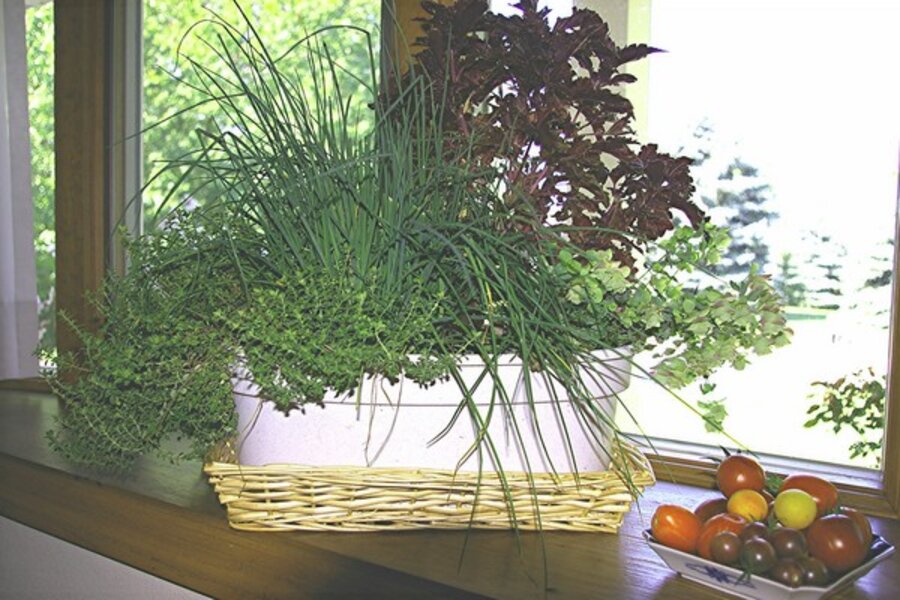How to grow herbs indoors during winter
Loading...
I’m potting up herbs this week to bring indoors so I’ll have a fresh and steady supply throughout my long winter. Pots of chives, thyme, and tarragon turn meals into gourmet fare and my kitchen window into a green view. They save money, too.
All you need are containers, the right potting mix, good light, and herbs that require similar growing conditions.
A word of caution about selecting them; not all herbs grow well indoors. Cilantro and dill, for example, decline rapidly, even in a sun-drenched window. Both need to be started from seed every few weeks, because they don’t regenerate new growth after being cut.
Best herbs for indoors
The hardiest herbs indoors coincidentally provide the widest array of flavors for cooking. Five herbs that thrive in a sunny window -- oregano, chives, mint, rosemary, and thyme -- will flavor everything from soups, salads, meat, fish, and poultry to teas and Italian foods.
I like to group all of them, except mint, together in planters for windowsill display and ease of care.
Mint does best in its own pot, because it needs extra nitrogen to build aroma and flavor in the leaves.
Basil does well for me, too, in intense light; I grow it under plant lights with my orchid collection.
Give all herbs as much light as possible. A south-facing window provides enough for most. Many east- or west-facing ones do, too.
Add a grow light or fluorescent fixture hung above plants to supplement light in dimmer windows. Leave lights on 14 to 16 hours daily in winter months to compensate for the weaker sun of the season. Use an inexpensive timer to turn them on and off.
Plant herbs in a lightweight potting mix, with added perlite or coarse sand and add a pinch of lime. Most herbs prefer sweet soil with a higher pH. Sage is the exception. Because it likes acidic soil, add extra peat moss to its potting mix.
Check plants every day, and water when soil is dry a half inch under the surface. Feed every two weeks with a balanced water-soluble fertilizer at the recommended rate listed on the package label.
Indoor herbs grow slowly in winter months, so reduce fertilizer amounts to a quarter of normal from Oct. 15 until March 15.
Tips for Success
- Start with herb plants. Seeds take time to sprout and mature into usable-size plants.
- Don’t allow plants to touch cold windows. Foliage will freeze, and plants may die.
- Plant herbs with the same cultural requirements in a single container. If they have different needs, pot them up separately.
- Pinch back branching herbs such as rosemary to keep plants shrubby rather than leggy. Regular harvesting of leaves and stems also forces plants to stay shrubby. Never trim more than a third of the plant, though.
- Remove flower buds from plants to keep them growing.
- Mulch containers with coarse sand, small pebbles, or aquarium gravel to avoid gnat infestations. The insects will not be able to burrow into potting mix to lay eggs or rest.
-----
Doreen Howard, the Edible Explorer, is one of nine garden writers who blog regularly at Diggin' It. If it’s edible and unusual, Doreen figures out a way to grow it in her USDA Zone 4b garden. She’ll try anything once, even smelly Durian. A former garden editor at Woman’s Day, she writes regularly for The American Gardener and The Old Farmer’s Almanac’s Garden Guide. To read more by Doreen, click here.





